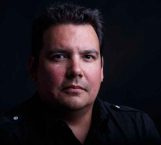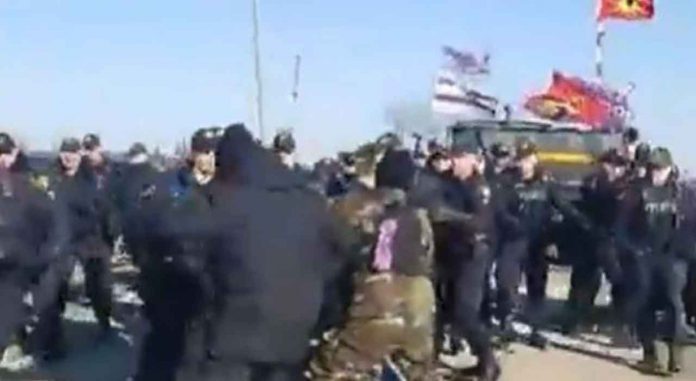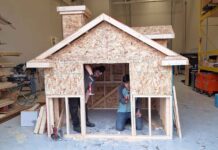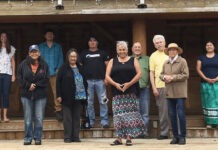It’s around 7 a.m., and there’s a knock on my bedroom door.
“Daddy, something’s happening to the Mohawks out East.”
My daughter is 13, almost the exact age I was during the 1990 Oka Crisis, the 78-day standoff between the Mohawks (a tribe of the Haudenosaunee, also called the Iroquois) of Kanehsatà:ke and Quebec police and the Canadian military.
For centuries, the Haudenosaunee asserted they had used this area — which they called “the Pines” — for medicine-collecting, ceremonies, and burials. When settlers encroached, they pursued legal means for nearly 200 years: making speeches, writing letters, filing land claims, and going to court.
None of these worked. By the 1960s, their traditional territory had shrunk from hundreds of miles to six square kilometres.
Claiming the Pines “legally” (as previous settlers did under French, British, and eventually Canadian law), the community of Oka, Que., won a 1990 court decision against protesters at Kanehsatà:ke, announcing plans to extend its nine-hole golf course and build condominiums.
The Mohawks were left with no choice but to set up a blockade, and put their bodies in front of bulldozers.
In return, Quebec sent in the police (a provincial officer was killed in a firefight July 11, 1990, marking the official start of the Oka Crisis) and, eventually, the military.
Nation-wide solidarity marches, blockades, and land occupations took place. One was the “Peace Village” beside the Manitoba legislature.
Following arrests and violence, the federal government purchased the land, and tensions tempered down to a simmer.
This was when I woke up to how Canada deals with Indigenous land.
As a hockey-loving, urban 14-year old young Indigenous guy who cared more about the Justice League then Indigenous injustice, I couldn’t ignore Canadian military arresting people who looked like me. A few weeks later, I went to the library, and found out how the Haudenosaunee had their land systematically stolen.
A few years later, I looked around and realized my community of Selkirk was stolen land, too (the former site of St. Peter’s Indian Settlement or Peguis First Nation).
After that, I looked around Manitoba and saw examples such as the Chemawawin Cree, Sayisi Dene, and Cree at South Indian Lake who all were removed from their lands “legally.”
In my 30s, I realized every time Indigenous peoples lose their lands, Canada’s economy is used as the reason.
Now, it’s 2020, and my daughter is witnessing her own Oka, as police dismantle a Mohawk rail blockade outside Belleville, Ont.
Like all of us, she is witnessing an Indigenous community who cannot say “no” to Canada’s economical demands.
She is seeing what happens if anyone stands in solidarity with the Wet’suwet’en hereditary chiefs in B.C. She’s learning from social media, research and media how the removal of the Wet’suwet’en “land defenders” is unjust, as it’s clear that community has not given consent.
She’s learning Canada has no constitutional or legal right (or environmental, according to the announcement Friday) to plow the Coastal GasLink pipeline project through.
She’s also learning from people like family friend Jason Parenteau, whose grandmother is Wet’suwet’en. Parenteau has been home many times. Like many Wet’suwet’en, he tells anyone who will listen they aren’t defending their land to disrupt Canada.
“It’s about protecting 10,000-year-old fossilized history, salmon runs, and water that still can be drank from streams,” he says. “Wet’suwet’en territory is really unique.
“All Wet’suwet’en want is to have the same quality of life for their future as the land provides — the medicines, clean water, wildlife, and opportunity to practice their culture and rights.”
Until this is possible for at least a significant amount of Wet’suwet’en, the only way forward is to remove police, negotiate fairly with all leaders, and — if Canada doesn’t want this to happen again — treat Indigenous nations fairly through the legal arrangements the country negotiates.
This is what will end the national crisis; not arrests.
It comes down to one principle: share the land and all the beauty within it. Fully.
If Canadian police forces intend to forcibly remove every rail, road, and public space occupation, there will be weeks of arrests — and the images of conflict and violence will mar Canada’s peace-keeping, friendly, multicultural self-image.
And when these blockades are removed, more will spring up. Because Indigenous peoples are awake.
Unlike those of us who took a long time to learn this lesson, this generation refuses to be silent.
This generation refuses to accept laws are unjust, divisive, and enable violence to occur.
This generation refuses to put up with 30 more years of the same.
 Niigaan Sinclair
Niigaan Sinclair
Originally appeared in the Winnipeg Free Press on March 1, 2020. Republished with the permission of the author.
The views, opinions, and positions expressed by all columnists and contributors are the author’s alone. They do not inherently or expressly reflect the views, opinions and/or positions of NetNewsLedger.








